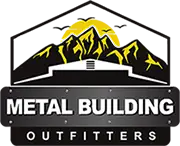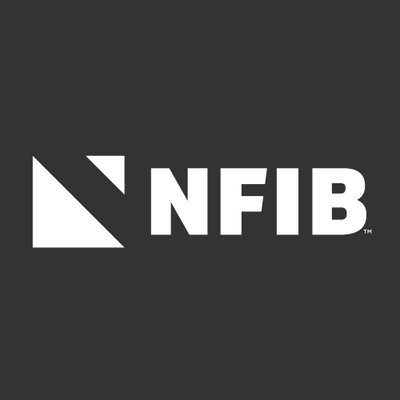
Contents
When it comes to enhancing your livestock farming operations, you might consider it a wise investment to explore the robust offerings in metal structures. These durable designs safeguard your animals and streamline your workflow. From barns to portable shelters, each option brings unique advantages tailored to your specific needs. You’ll want to understand how each structure contributes to long-term efficiency and animal welfare, which raises the question: what are the ten most effective metal structures that could transform your farm?
Key Takeaways
- Metal barns provide ample customizable space for feeding, sleeping, and milking, ensuring optimal livestock care and productivity.
- Portable shelters allow for flexible, movable options, supporting rotational grazing and access to fresh pastures.
- Chicken coops made from durable metal ensure resilience against weather while promoting adequate airflow for flock health.
- Cattle pens designed with high-grade steel enhance safety and operational efficiency through smooth livestock movement.
- Hay barns with corrosion-resistant materials and proper ventilation systems maintain hay quality and extend storage longevity.
Metal Barns
When considering the construction of livestock facilities, metal barns offer numerous advantages that make them a preferred choice for many farmers. One of the primary metal barns advantages is their durability. Unlike traditional wooden structures, metal barns resist rot, pests, and harsh weather conditions, ensuring a longer lifespan and lower maintenance costs. This durability translates to reduced downtime for repairs, allowing you to focus more on your livestock.
Additionally, metal barn designs provide versatility in layout and functionality. You can customize these structures to accommodate various livestock types, from cattle to poultry, optimizing space and efficiency. The open interior design of metal barns facilitates easy movement and ventilation, which is essential for maintaining a healthy environment for your animals.
Another significant advantage is energy efficiency. Many modern metal barn designs incorporate insulation and reflective materials that help regulate temperature, reducing heating and cooling costs. This efficiency benefits your wallet and contributes to a more sustainable farming operation.
Moreover, metal barns are often quicker to construct compared to traditional buildings. This speed allows you to establish your livestock facilities promptly, minimizing disruptions to your farming activities.
Livestock Shelters
When choosing livestock shelters, you’ll encounter various types designed to meet specific needs.
Metal structures offer durability and protection against harsh weather, ensuring your animals remain safe and comfortable.
Understanding the benefits of these shelters can help you make informed decisions for your farming operation.
Types of Livestock Shelters
Selecting the right type of livestock shelter is essential for ensuring the health and productivity of your animals. Consider these four common types of shelters that enhance shelter aesthetics and prioritize space optimization:
Barns: These traditional structures offer ample space for various livestock. They can be customized with separate areas for feeding, sleeping, and milking, ensuring a comfortable environment.
Sheds: Ideal for smaller farms, sheds provide a straightforward solution. They’re easy to construct and can be designed to fit into tight spaces while offering protection from the elements.
Portable Shelters: These flexible options allow you to move your livestock as needed. They’re particularly useful for rotational grazing, ensuring your animals always have access to fresh pasture.
Greenhouses: Surprisingly effective for livestock, greenhouses allow for natural light and ventilation, creating a warm environment. This type of shelter can be aesthetically pleasing and functional.
Each of these options can be tailored to suit your specific needs while maintaining a sense of community and care for your livestock.
Benefits of Metal Structures
Metal structures offer a range of advantages for livestock shelters that can greatly enhance farm operations. One of the primary benefits is their cost efficiency. Unlike traditional materials, metal tends to have a longer lifespan, which means you’ll save on replacement costs over time.
Additionally, the initial investment often balances out with lower operational costs, making it a financially sound choice.
Another significant advantage is the reduced maintenance requirements. Metal shelters are resistant to rot, pests, and weather damage, which means you won’t spend as much time or money on upkeep.
This allows you to focus more on your livestock and less on repairs.
Furthermore, metal structures provide excellent insulation and ventilation options, creating a comfortable environment for your animals year-round.
This contributes to better health and productivity, which can translate into increased profitability for your operation.
Feed Storage Structures
Efficiently storing feed is essential for maintaining the health and productivity of livestock. You need reliable feed storage structures that protect your investment and ensure your animals receive quality nutrition.
Metal structures are ideal for this purpose, offering durability and resistance to pests and environmental factors. When considering feed storage solutions, focus on the following key elements:
Capacity: Determine the amount of feed you’ll need to store. Bulk feed systems should accommodate your livestock’s consumption rates without frequent replenishment.
Ventilation: Proper airflow is vital to prevent moisture buildup, which can lead to spoilage. Confirm your design includes adequate ventilation to keep feed dry and fresh.
Accessibility: Design your feed storage with easy access in mind. Whether you’re using bags or bulk systems, make sure you can quickly retrieve feed, minimizing downtime during feeding.
Security: Protect your feed from theft and contamination. Invest in sturdy, lockable structures that deter unwanted access, confirming your livestock always have a safe, quality feed.
Hay Barns
When constructing hay barns, you need to take into account key design elements that ensure optimal storage and protect your investment.
Selecting durable materials is vital for longevity, while effective ventilation and climate control will help maintain the quality of your hay.
Let’s explore these essential factors to enhance your hay storage solutions.
Design Considerations for Hay Barns
In designing hay barns, several critical factors must be considered to ascertain the ideal storage and preservation of hay.
A well-crafted hay barn enhances hay storage efficiency and contributes to overall hay barn aesthetics, creating a welcoming environment for your farming operations.
Here are four key design considerations:
Ventilation: Ascertain proper airflow to prevent mold and spoilage. Incorporate vents and design elements that allow for natural air circulation.
Roof Design: Opt for a sloped roof to facilitate rain runoff and prevent moisture accumulation. Use materials that reflect sunlight to reduce heat inside.
Accessibility: Plan for easy access to loading and unloading areas. Consider wide doors and pathways to facilitate the movement of equipment and hay.
Sustainability: Use eco-friendly materials and design features that minimize energy consumption, aligning with modern farming practices.
Material Durability and Longevity
Selecting the right materials for your hay barn is essential for ensuring durability and longevity. Regarding material selection, you’ll want to prioritize metals that resist corrosion, such as galvanized steel or aluminum. These materials withstand harsh weather conditions and reduce maintenance costs over time.
Conducting a thorough longevity assessment is vital in this process. Evaluate how different materials perform under local environmental factors, including humidity and temperature fluctuations. For instance, while wood may initially seem appealing, its susceptibility to rot and pests can compromise the barn’s structural integrity.
Incorporating high-quality roofing and siding materials will also enhance the barn’s lifespan. Look for options that are specifically engineered for agricultural use, as they often offer better insulation and protection against moisture.
Ultimately, your investment in durable materials will pay off through reduced repair needs and a longer-lasting structure. By making informed choices, you’re not just building a hay barn; you’re creating a reliable environment for your livestock and their feed.
This commitment to quality resonates within the farming community, fostering a sense of pride and belonging.
Ventilation and Climate Control
Proper ventilation is essential for maintaining a stable climate within your hay barn, as it directly impacts both the quality of stored hay and the health of your livestock.
Effective climate adaptation strategies can help you enhance airflow and moisture control, ensuring that your hay remains dry and your animals stay healthy.
Here are four key considerations for implementing natural ventilation in your barn:
Design: Incorporate roof vents and side openings to facilitate cross-ventilation, allowing fresh air to flow through while expelling stale air.
Orientation: Position your barn to take advantage of prevailing winds, enhancing the natural airflow that cools the interior during hot months.
Humidity Control: Monitor moisture levels closely, as excess humidity can lead to mold growth and spoilage. Use dehumidifiers if necessary.
Regular Maintenance: Keep vents and openings clear of debris to ensure ideal airflow. Regular inspections can prevent blockages that compromise ventilation efficiency.
Equipment Storage Units
A well-designed equipment storage unit is fundamental for any livestock farming operation, providing a secure and organized space for tools and machinery. You need to take into account durable metal structures that withstand harsh environments while offering effective storage solutions. By utilizing robust materials, you ensure that your equipment remains protected from the elements, reducing maintenance costs and prolonging the life of your valuable assets.
Space optimization is imperative in any farm layout. When planning your storage unit, think about vertical storage options, such as shelving and racks, to maximize available space. Organizing tools by frequency of use can streamline your workflow, making sure that you can quickly access what you need without wasting time searching through clutter. Implementing labeled bins and designated zones for specific equipment can enhance organization and efficiency.
Moreover, think about integrating features like roll-up doors or wide entry points for easy access, especially if you’re working with larger machinery. Proper ventilation is also critical in preventing moisture buildup, which can lead to rust and damage over time.
Investing in a well-structured equipment storage unit enhances functionality and fosters a sense of belonging within your farming community. You’re creating a hub where equipment is easily accessible, promoting collaboration and efficiency among your team.
With a focus on practical design and effective storage solutions, you can ensure that your livestock farming operation remains productive and well-organized, paving the way for long-term success.
Cattle Pens
Cattle pens are vital structures in livestock farming, providing safe and efficient spaces for managing and handling cattle. The design of these pens plays an important role in ensuring the well-being of your livestock as well as the effectiveness of your operations.
When evaluating cattle pen designs, several factors come into play, including safety, efficiency, and durability.
Here are four key elements to take into account when constructing or upgrading your cattle pens:
Materials: Choose durable cattle pen materials such as galvanized steel or heavy-duty wood. These materials withstand wear and tear while offering protection against harsh weather conditions.
Layout: An effective layout promotes smooth cattle movement and minimizes stress. Verify there’s ample space for cattle to move without overcrowding, which can lead to injuries.
Access Points: Incorporate easy access points for both cattle and handlers. Gates should be strategically placed to facilitate efficient movement during feeding, sorting, or medical procedures.
Maintenance Considerations: Select designs that allow for easy cleaning and maintenance. Regular upkeep is essential for maintaining hygiene and preventing disease.
Chicken Coops
Regarding poultry farming, chicken coops serve as critical structures for the well-being and productivity of your flock. A well-thought-out chicken coop design ensures that your chickens have a safe, comfortable, and conducive environment to thrive. Key elements of an effective design include proper ventilation, insulation, and adequate space for each bird.
You’ll want to prioritize materials that withstand the elements and provide durability, such as metal structures, which are less prone to wear and tear compared to wood.
Mobile chicken coops have gained popularity for their versatility. These structures allow you to move your flock to fresh pastures regularly, promoting better health and reducing the risk of disease. When designing a mobile chicken coop, consider weight, size, and ease of movement. Incorporate wheels and a lightweight frame to facilitate relocation without undue effort.
Additionally, think about the coop’s layout. Nesting boxes, roosting bars, and feeding stations should be strategically placed to maximize space and minimize stress among your chickens. You can create a productive environment that fosters community among your flock while ensuring their safety and comfort.
Investing in durable metal structures for your chicken coop will pay off in the long run. They will protect your chickens from predators and harsh weather and enhance your farming experience.
Horse Stables
Building a robust horse stable is crucial for maintaining the health and well-being of your equine companions. A well-structured stable protects your horses from harsh weather and promotes their overall health.
To ensure effective horse stable maintenance and enhance equine health, consider these key factors:
Material Selection: Use durable materials like galvanized steel or treated wood that can withstand the elements and resist wear.
Ventilation: Ensure proper airflow to reduce humidity and prevent respiratory issues. Stables should have windows and vents strategically placed.
Space Allocation: Provide adequate space for each horse. A cramped stable can lead to stress and injury; generally, allow at least 12×12 feet per horse.
Hygiene Practices: Regular cleaning is crucial. Remove waste and soiled bedding daily to minimize disease risk and maintain a healthy environment.
Implementing these strategies enhances the structural integrity of your horse’s stability and fosters a safe, comfortable living space for your horses.
Regular maintenance checks will help identify any wear and tear that could compromise the stables’ durability.
Goat Shelters
When designing goat shelters, you’ll need to prioritize factors like shelter design, material durability, and effective ventilation.
Choosing the right materials can greatly impact the longevity and functionality of the structure.
Additionally, proper insulation ensures your goats remain comfortable in varying weather conditions, which is essential for their health and productivity.
Shelter Design Considerations
Goat shelters must be designed with specific considerations to ensure the health and productivity of the animals.
When planning your goat shelter, focus on functionality, comfort, and sustainability. Here are four key design considerations to keep in mind:
Ventilation: Assure adequate airflow to reduce humidity and prevent respiratory issues. Proper ventilation helps maintain a comfortable environment for your goats.
Space Requirements: Provide sufficient space for each goat to move freely. Overcrowding can lead to stress and health problems, so adhere to space guidelines based on the number of goats you have.
Shelter Aesthetics: While functionality is paramount, consider the visual appeal of the structure. An aesthetically pleasing shelter can enhance the overall environment and create a welcoming atmosphere for both animals and visitors.
Environmental Impact: Select materials and design features that minimize negative effects on the surrounding ecosystem.
Sustainable practices contribute to a healthier environment, benefiting both your goats and the community.
Material Durability Options
In livestock farming, selecting durable materials for goat shelters is essential for ensuring long-term functionality and safety. Steel grades play a pivotal role in materials. Opt for high-grade steel, as it offers superior strength and longevity compared to lower grades. This choice supports the structural integrity of the shelter and withstands the rigors of daily use.
Corrosion resistance should be a top priority. Goats can be hard on their surroundings, so using galvanized or weather-resistant steel can make a significant difference. This type of steel undergoes a protective coating process that prevents rust and deterioration, ensuring that your investment lasts for years.
Additionally, consider the environment in which your shelter will be located. If you live in an area with high humidity or exposure to harsh weather, investing in stainless steel could be worthwhile. It provides excellent corrosion resistance and durability.
Ultimately, choosing the right materials is about creating a safe, comfortable, and long-lasting environment for your goats. By focusing on steel grades and corrosion resistance, you’ll enhance the overall quality of your goat shelters, fostering a thriving livestock operation.
Ventilation and Insulation
Creating an ideal environment for your goats hinges on effective ventilation and insulation in their shelters. Proper airflow ensures your goats remain healthy, while thermal insulation keeps them comfortable across varying temperatures.
Here’s how to achieve both:
Natural Ventilation: Design your shelter to maximize cross-breezes. Position openings strategically to facilitate airflow without causing drafts.
Insulation Materials: Use high-quality thermal insulation materials, like rigid foam or insulated panels, to maintain a consistent internal temperature.
Ventilation Systems: Consider installing adjustable vents or fans for additional airflow control during extreme weather.
Regular Maintenance: Inspect and maintain your ventilation and insulation systems regularly to prevent the buildup of moisture and ensure efficiency.
Customizable Farm Buildings
Customizable farm buildings provide farmers with the flexibility to design spaces that meet specific operational needs and accommodate livestock efficiently. By opting for custom designs, you can tailor each structure to your unique farming requirements, ensuring peak functionality and comfort for your animals. Modular buildings enhance this flexibility, allowing you to expand or modify your facilities as your farm grows.
When considering customizable farm buildings, it is crucial to evaluate various factors. Below is a table summarizing the key considerations and benefits:
| Consideration | Benefits |
|---|---|
| Space Efficiency | Maximizes usable area |
| Flexibility | Adaptable to changing needs |
| Cost-Effectiveness | Reduces long-term expenses |
| Livestock Welfare | Enhances animal comfort |
Each of these elements plays a critical role in creating an environment conducive to both productivity and animal welfare. With modular designs, you can easily reconfigure spaces for different types of livestock or specific farming operations. This adaptability saves time and fosters a sense of belonging within your farming community, as you can share best practices and ideas with fellow farmers.
Investing in customizable farm buildings means you’re investing in the future of your farm. You’re creating a space that grows with you, allowing you to respond to the evolving demands of livestock farming effectively. Embrace the potential of custom designs and modular buildings to shape a thriving agricultural enterprise.
Recap
In a world where durability seems optional, investing in robust metal structures for livestock farming is a no-brainer. You’d think choosing flimsy alternatives would save money, but the irony is that those quick fixes lead to costly repairs and unhappy animals. By opting for high-quality barns, shelters, and storage units, you’re not just ensuring longevity and efficiency; you’re fostering an environment where your livestock can thrive. After all, who wouldn’t want their farm to be the envy of the neighborhood?
Recent Posts
What Are Affordable Metal Garage Options for Farms?
Imagine you’re managing a bustling farm like Smith’s Acres, where every inch of space counts.
What Are Your Options for Agricultural Metal Storage?
When you’re exploring agricultural metal storage options, it’s crucial to take into account the various
How to Choose Versatile Agricultural Metal Structures
When you’re considering versatile agricultural metal structures, it’s essential to start by evaluating your specific




